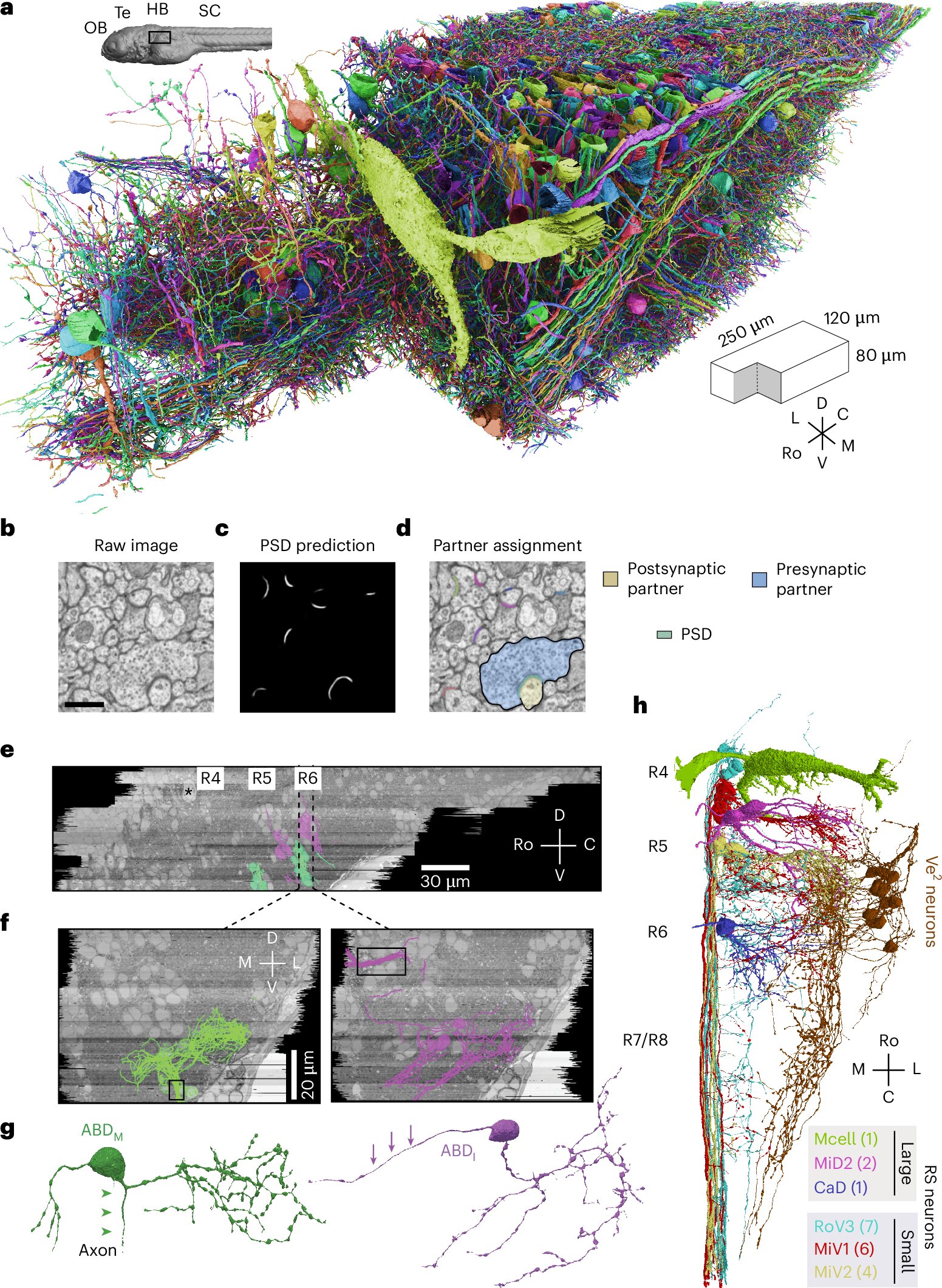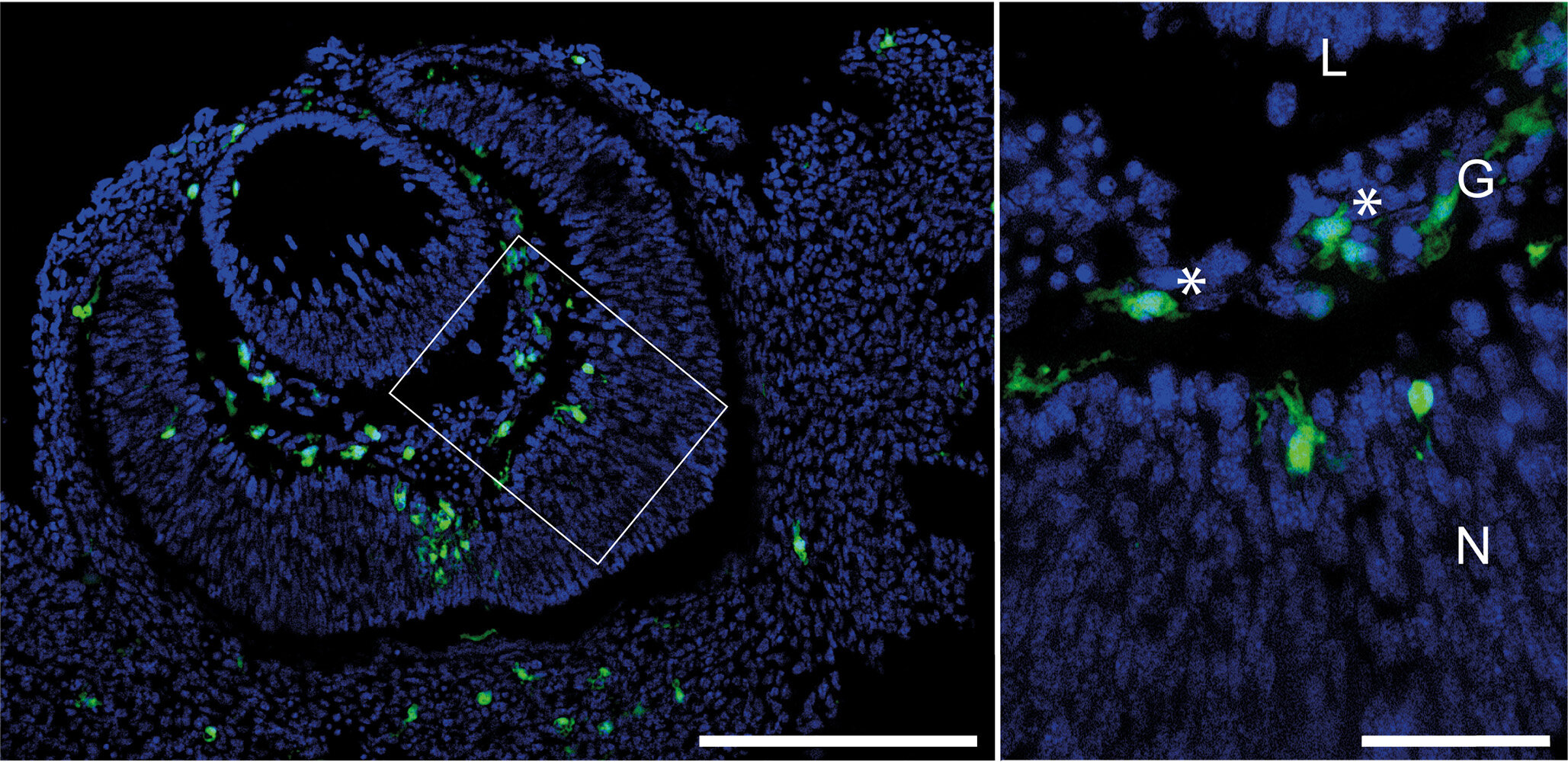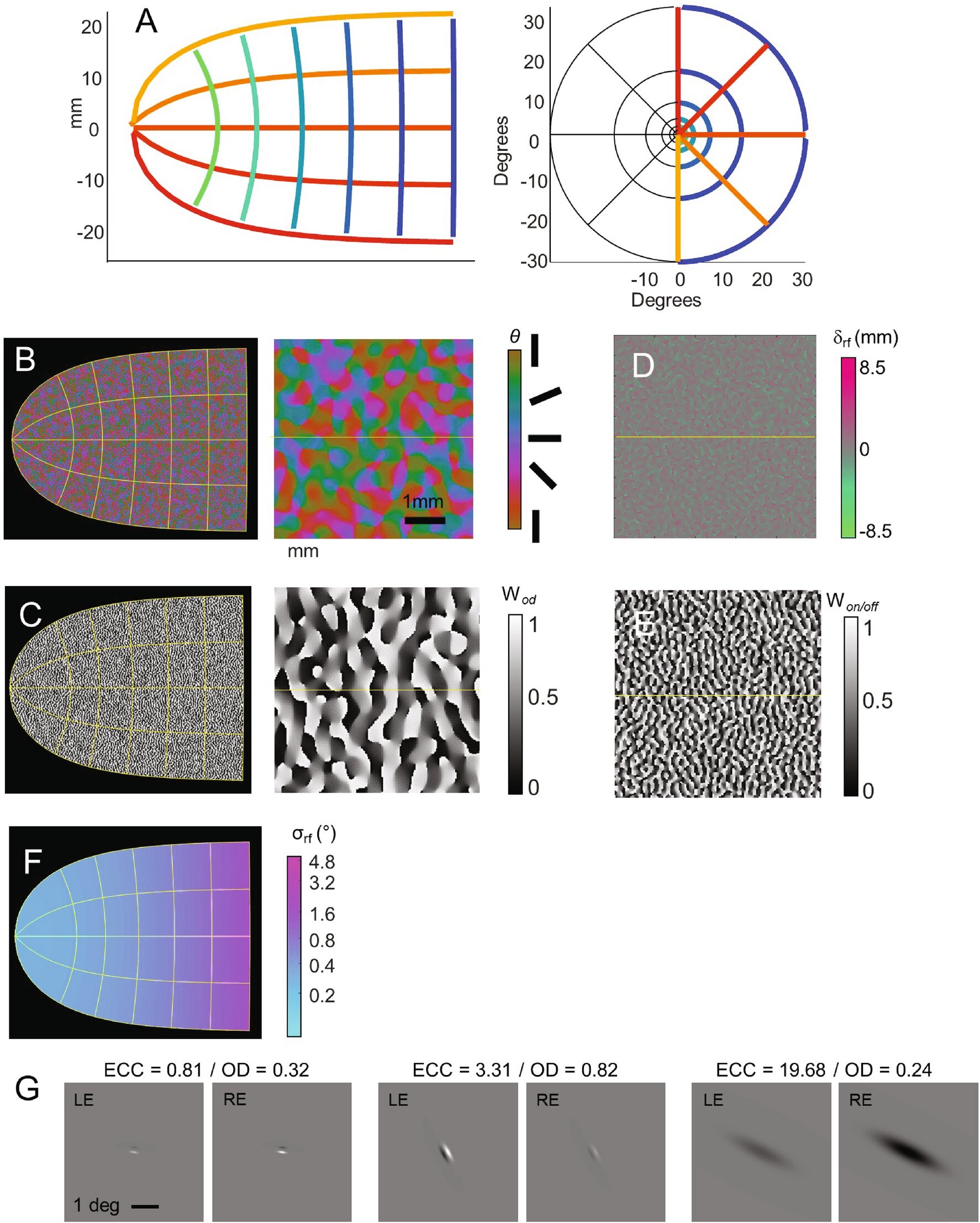
Working with week-old zebrafish larva, researchers at Weill Cornell Medicine and colleagues decoded how the connections formed by a network of neurons in the brainstem guide the fishes’ gaze.
The study, published Nov. 22 in Nature Neuroscience, found that a simplified artificial circuit, based on the architecture of this neuronal system, can predict activity in the network. In addition to shedding light on how the brain handles short-term memory, the findings could lead to novel approaches for treating eye movement disorders.
Organisms are constantly taking in an array of sensory information about the environment that is changing from one moment to the next. To accurately assess a situation, the brain must retain these informational nuggets long enough to use them to form a complete picture—for instance, linking together the words in a sentence or allowing an animal to keep its eyes directed to an area of interest.
“Trying to understand how these short-term memory behaviors are generated at the level of neural mechanism is the core goal of the project,” said senior author Dr. Emre Aksay, associate professor of physiology and biophysics at Weill Cornell Medicine, who led the study, together with Dr. Mark Goldman at the University of California Davis and Dr. Sebastian Seung at Princeton University.
Modeling a dynamical system
To decode the behavior of such neuronal circuits, neuroscientists use the tools of dynamical systems, which involve building mathematical models that describe how the state of a system changes over time, where the current state determines its future states according to a set of rules.
A short-term memory circuit, for example, will remain in a single preferred state until a new stimulus comes along, causing it to settle into a new activity state. In the visual-motor system, each of these states can store the memory of where an animal should be looking.
But what parameters help to set up that type of dynamical system? One possibility is the anatomy of the circuit: the connections that form between each neuron and how many connections they make.
Another likely possibility is the physiological strength of those connections, which is established by a myriad of factors like the amount of neurotransmitter being released, the type of synaptic receptors and the concentration of those receptors.
To understand the contributions from circuit anatomy, Dr. Aksay and his collaborators looked to larval zebrafish. By five days of age, these fishlets are swimming around and hunting prey, a skill that involves sustained visual attention. Importantly for the research team, the brain region that controls eye movement is structurally similar in fish and mammals. But the zebrafish system contains only 500 neurons.
“So, we can analyze the entire circuit—microscopically and functionally,” Dr. Aksay said. “That’s very difficult to do in other vertebrates.”
Zebrafish shed light on neuronal circuits
Using an array of advanced imaging techniques, Dr. Aksay and colleagues identified the neurons that participate in controlling the animals’ gaze and then determined how these neurons are wired together. They discovered that the system consists of two prominent feedback loops, each containing three clusters of tightly connected cells.
The researchers used this distinctive architecture to build a computational model. They found that their artificial network could accurately predict activity patterns of the zebrafish circuit, which they validated by comparing their results to physiological data.
“I consider myself a physiologist, first and foremost,” Dr. Aksay said. “So, I was surprised how much of the behavior of the circuit we could predict from the anatomical architecture alone.”
Next, the researchers will explore how the cells in each cluster contribute to the behavior of the circuit—and whether the neurons in the different clusters have distinct genetic signatures. Such information could allow clinicians to therapeutically target those cells that may malfunction in eye movement disorders.
The findings also provide a blueprint for unraveling the more complex computational systems in the brain that rely on short-term memory, such as those involved in deciphering visual scenes or understanding speech.
More information:
Vishwanathan, A., et al. Predicting modular functions and neural coding of behavior from a synaptic wiring diagram. Nature Neuroscience (2024) DOI: 10.1038/s41593-024-01784-3
Citation:
New model of neuronal circuit provides insight on eye movement (2024, November 22)
retrieved 22 November 2024
from https://medicalxpress.com/news/2024-11-neuronal-circuit-insight-eye-movement.html
This document is subject to copyright. Apart from any fair dealing for the purpose of private study or research, no
part may be reproduced without the written permission. The content is provided for information purposes only.




